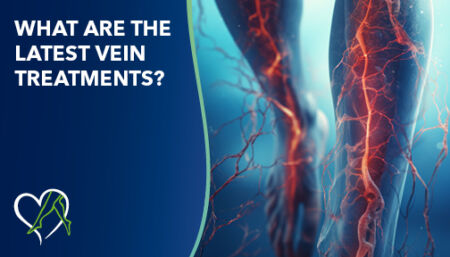
Center for Vein Restoration offers the latest advancements in vein treatments. These minimally invasive procedures can rid you of the pain and swelling of varicose veins once and for all with little downtime.
Chronic venous insufficiency (CVI) refers to a breakdown in your blood circulation. It’s estimated that CVI affects between six to seven million adults in the U.S., leaving them with swollen and achy legs, varicose veins, and even skin ulcers. Fortunately, today’s vein treatments to treat CVI are brief, effective, and painless. Continue reading to learn about the latest vein treatments offered at your local Center for Vein Restoration (CVR).
Your veins are lined with tiny valves that open and close to move deoxygenated blood toward the heart. Various reasons, ranging from heredity to lifestyle choices, can cause the valves to lose their strength, which allows blood to backflow and pool in the veins. This process, known as venous reflux, leads to edema (leg swelling), pain, cramping, itching, and other uncomfortable sensations.
Historically, treating varicose veins and CVI involved an invasive procedure requiring a lengthy hospital stay. Fortunately, today’s vein treatments have significantly evolved. Minimally invasive procedures are completed on an outpatient basis and followed by a brief recovery period with few restrictions.
If you’re considering undergoing vein treatment, you have plenty of options to choose from, starting with conservative therapies such as the following:
Wear compression stockings. Compression stockings, available in different strengths and lengths, gently squeeze the veins so blood flows smoothly. Compression stockings are recommended if you need to sit or stand for long periods.
Elevate your legs. Prop up your legs three times a day for about 30 minutes to drain blood from the legs to the heart.
Change your diet. Shedding pounds lifts the excess strain on your veins. Eat a vein-friendly diet of fruits and vegetables and foods high in fiber. Cut out salt, which makes you retain water and promotes swelling.
Exercise more. Gentle, low-aerobic exercises such as walking and biking work the calf muscles, which in turn helps push blood through the veins.
Conservative methods are great for reducing CVI symptoms. But to eliminate varicose veins and other signs of CVI, you must undergo surgical vein treatment. Common procedures include:
Sclerotherapy. Sclerotherapy is considered the standard treatment for spider veins and smaller varicose veins. The doctor injects a safe, saline-based solution into the vein during the procedure. The sclerosant irritates and collapses the vein wall, which is eventually absorbed by the body.
Thermal ablation. Thermal ablation destroys the diseased vein with heat from laser or high-frequency radio waves.
Ambulatory phlebectomy. Large veins close to the skin’s surface are treated using ambulatory phlebectomy. The swollen vein is removed via two tiny incisions in the skin.
In addition to these three popular vein treatments, newer therapies have emerged over the last few years that are just as effective:
VenaSeal. The doctor will inject a proprietary medical adhesive to seal and shut the diseased vein. VenaSeal avoids applying heat, which can be uncomfortable for some patients. No anesthesia is needed.
Varithena. Microfoam is injected via a catheter, sealing the vein. Blood diverts to nearby healthy veins.
ClariVein. ClariVein involves using a mechanochemical device that administers a sclerosant while a tiny rotating tip moves through the vein to destroy it.
Most of these procedures require little to no anesthetic. Recovery is brief, with minor restrictions. You may be asked to wear compression stockings to promote healing and circulation. While strenuous exercise should be avoided for a few weeks afterward, walking is encouraged.
CVI is not considered a life-threatening condition, but its symptoms can worsen and severely impair your quality of life, making everyday tasks unbearable. Getting treatment at the first sign of CVI is highly encouraged, and these latest vein treatments can help prevent more severe complications in the future, such as venous ulcers and blood clots.
Center for Vein Restoration (CVR) has offices nationwide, all staffed with board-certified physicians with years of experience treating all stages of vein disease using the abovementioned procedures.
Contact your nearest CVR location today to schedule a consultation or speak to a representative. You may also schedule online at your convenience.